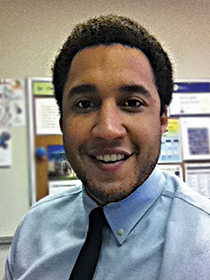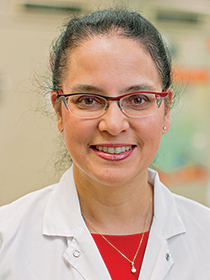
Dr. Garner
For smaller microbiology laboratories, over the near term, he agrees with Dr. Morgan that purchase of a MALDI could be difficult to justify. “But as more and more data and papers come out showing the direct patient care impact of this piece of technology, they’ll have further justification to go to their own hospital administration and say that with MALDI we’re going to cut down days of stay, bed time, antimicrobial usage, and so on.”
Dr. Garner thinks in five years MALDI will be able to provide some susceptibility information. “Just as PCR does, based on the understanding of the proteomic spectrum that’s available, because MALDI is a cheap and efficient way of producing a proteomic spectrum,” he says.
MALDI mass spec is not likely to eliminate conventional biochemical tests, in his view. “MALDI is a very good tool, but no technique is 100 percent. It’s always up to the expertise of clinical scientists on the bench to determine whether or not the MALDI-TOF call is correct, and sometimes it can be questionable. Sometimes you get a ‘no ID’ from the MALDI. So if you don’t have biochemical backup, what are you going to do at that point?”
He is certain that the MALDI technology will get better and better at calling identifications. But it’s important, he says, for clinical laboratory scientists to know and maintain their basic knowledge of biochemistry. “If a submitted urine specimen grows a flat colony that’s a lactose-positive Gram-negative rod on a MacConkey plate and it’s spot indole-positive, that’s going to be E. coli. We can’t lose that education. For the patient in the bed on the hospital floor, it doesn’t matter what technique you use to identify the organism. They just need that result as quickly as possible. So I think we need to maintain our entire toolbox.”
MALDI-TOF will continue to improve as there are more and more users, he adds, because the libraries will contain more information. “If there are only nine Staphylococcus aureus to compare to your MALDI-TOF result,” he says, “you might not call it correctly. But if there are 9,000 or 90,000, your chances are much better.”
Nevertheless, MALDI presents the same risk associated with any machine: the danger that the human expertise in the lab won’t be there when needed. “As new, young technologists are coming in, you still have to be stringent in how they learn identification schemes, as backup in case the machines go down,” Dr. Garner cautions.
Pay a lot of attention to workflow, he says. “It’s a recognized challenge that once you have a MALDI in your lab, there’s a lot of work to do in the lab to appropriately incorporate that MALDI so it doesn’t become a bottleneck.”
MALDI’s future is secure, Dr. Garner believes. “Right now MALDI-TOF is moving to be the standard for rapid identification of cultured bacteria and yeast, and in the next five or 10 years it will become standard practice for identification. It really can not only dramatically improve turnaround time of identification but also have dramatically positive impacts in the lab.”

Dr. Patel
At Mayo Clinic in Rochester, Minn., the commitment to MALDI-TOF mass spectrometry has been anything but casual. The microbiology laboratory has acquired three of the Bruker MALDI-TOF mass spectrometers since 2010. Says Robin Patel, MD, professor of microbiology, chair of Mayo’s Division of Clinical Microbiology, and director of bacteriology: “MALDI-TOF mass spectrometry has completely changed the clinical practice of our culture-based laboratories.”
She first encountered the technology in Europe. When the technology was still for research use only in the U.S., her laboratory tested it on Gram-negative bacteria, then Gram-positive bacteria, anaerobic bacteria, yeast, dermatophytes, mycobacteria, etc. “Because it was such a new and different technology, I needed to be convinced, so we tested some of our most challenging and unusual organisms and when that worked, we tried even more uncommon organisms. We’ve validated each subset of organisms by evaluating performance, building our own mass spectral libraries, and coming up with detailed organism-specific reporting guidelines,” Dr. Patel says.
“We found MALDI-TOF mass spectrometry to be accurate and fast. It takes minutes to identify an isolate. For most organisms, the user takes a colony on a plate, places it on a MALDI-TOF mass spectrometry plate, overlays it with reagents, lets the reagents dry on the plate, and places the plate in the instrument.” Shortly thereafter, an organism identification is available.
As a result, Mayo Clinic has moved a large percentage of its biochemical-based organism identification to MALDI-TOF mass spectrometry. “We didn’t have anything like this before,” she says. “Historically, we performed much more biochemical-based identification, and because that didn’t always yield a definitive result, and because we identify many unusual organisms, we also performed a lot of sequencing-based identification. We still do some biochemical- and sequencing-based identification, but not nearly as much as we did in the pre-MALDI-TOF mass spectrometry era.” Both are costly and take longer than using the MALDI-TOF mass spectrometry approach, she says.
In part, Dr. Patel credits Mayo’s reporting scheme with making MALDI-TOF mass spec work so successfully. “We have come up with reporting guidelines for everything we do, so for every organism type we identify, we refer to a table that tells us what is acceptable for reporting.” For example: whether it can be reported and, if so, whether it can be reported at the species level, the genus level, the complex level, or whether further testing should be performed, she says. “With this approach, I’d say our accuracy is equivalent to that of sequencing.”
But the microbiology laboratory does a lot of testing unrelated to MALDI-TOF mass spectrometry, she says. MALDI-TOF mass spec is a tool for identifying cultured organisms and not a standalone test. “Antimicrobial susceptibility testing, molecular testing, and serologic testing, among other approaches, are regularly performed in clinical microbiology laboratories and don’t benefit from MALDI-TOF mass spectrometry. But for organism identification, MALDI-TOF mass spectrometry has transformed our processes,” Dr. Patel says. The ability to put colonies of different organism types onto a single platform is one of its main advantages, she notes.
Mayo Clinic has focused some of its recent research on the clinical value of being able to identify organisms to the species level, which MALDI-TOF mass spec technology facilitates. Prosthetic joint infection has been a particular interest. “Many of the organisms that infect artificial joints are normal skin flora and can be isolated as contaminants or pathogens,” Dr. Patel explains. “It can be difficult for physicians to tell whether an organism is a pathogen or a contaminant. We found we can glean some potential clinical significance from the species identification provided by MALDI-TOF mass spectrometry.”
Despite the laboratory’s having eliminated many of its biochemical tests in favor of MALDI-TOF mass spectrometry, she says, this new technology can’t do everything. “For example, Escherichia coli is not well differentiated from Shigella species by MALDI-TOF mass spectrometry, so we end up preferentially using biochemical testing to distinguish between these organism types.” Other organisms are not identified by MALDI-TOF mass spectrometry, for a variety of reasons, she says. Those are identified using sequencing- or biochemical-based identification, or sometimes both. As a large reference laboratory, Dr. Patel notes, Mayo Clinic won’t get rid of a biochemical test unless it is unlikely to ever be needed, but in the era of MALDI-TOF mass spec, Mayo Clinic has been able to discontinue some biochemical tests.
MALDI-TOF mass spec has changed traditional workflow. “With MALDI-TOF mass spectrometry, we don’t need to perform Gram stains on cultured isolates because if we have a well-isolated colony, we test it by MALDI-TOF mass spectrometry directly.” That was a workflow change for microbiology technologists, but the technologists who use MALDI-TOF mass spec enjoy using it. “We are able to identify bacteria and fungi so fast that our technologists get almost immediate feedback as to the identity of colonies they are seeing on plates. And we have lots of interesting findings,” Dr. Patel says. “Just yesterday, for example, we had a Gram-negative bacillus sent to us for identification which turned out to be a Brucella species. It came from a patient who hunted wild boars in Florida. We knew what it was right away, compared to in the past when it would have taken us several days to identify it.”
Dr. Patel doesn’t believe laboratories smaller than hers should rule out acquiring MALDI-TOF mass spec technology just because of its initial cost. “It’s within reach for large or medium-sized laboratories. For tiny laboratories, it may not make sense, but exactly where the size cutoff is, we don’t know yet.”
The microbiology field can take more general lessons from the MALDI-TOF, Dr. Morgan says. “We get kind of stuck sometimes in microbiology with what we’re comfortable with. We’ve been using biochemical and turbidity for ASTs for 50 years. But there are a lot of new technologies coming our way now. They don’t come without issues, they’re not plug and play, and you have to learn about them and use them correctly. But we need to be open to them.”
The possibilities that MALDI-TOF mass spec opens up are exciting, Dr. Patel believes. “We now have two systems in the U.S. that are FDA-cleared. It’s a technology that allows us to rapidly, accurately, and less expensively than previously identify bacteria and fungi grown on plates. Now that we have MALDI-TOF mass spectrometry to identify organisms, I would say there will be no going back to the methods we used to use.”
[hr]
Anne Paxton is a writer in Seattle.
 CAP TODAY Pathology/Laboratory Medicine/Laboratory Management
CAP TODAY Pathology/Laboratory Medicine/Laboratory Management
